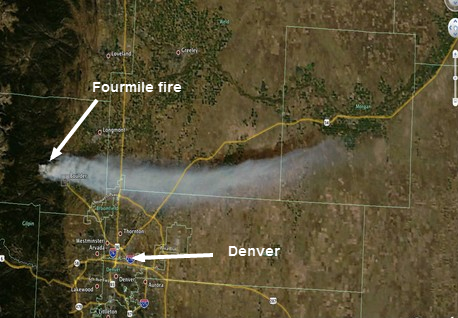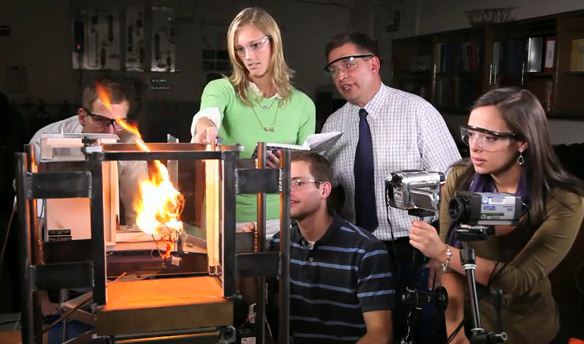
A group of five researchers studying climate change in the Greater Yellowstone ecosystem (GYE) have concluded that higher temperatures will lead to more frequent fires, changing the fire return interval from 100-300 years to less than 30 years. This would prevent the current suite of conifer species from regenerating and result in them being replaced with nonforest vegetation. This is expected to occur by mid-century.
From the abstract:
Our findings suggest a shift to novel fire–climate–vegetation relationships in Greater Yellowstone by midcentury because fire frequency and extent would be inconsistent with persistence of the current suite of conifer species.
Holy crap! By the time you or your children are applying for Medicare, there may be very few trees left in Yellowstone National Park.
Here are their findings:
Conclusions
Continued warming could completely transform GYE fire regimes by the mid-21st century, with profound consequences for many species and for ecosystem services including aesthetics, hydrology, and carbon storage. The conditions associated with extreme fire seasons are expected to become much more frequent, with fire occurrence and area burned exceeding that observed in the historical record or reconstructed from paleoproxy records for the past 10,000 y. Even in years without extreme fire events, average annual area burned is projected to increase, and years with no large fires—common until recently—are projected to become increasingly rare. The timing and spatial location of such changes varied somewhat among the three GCMs used in this study, but the models converged by the latter part of the century. The magnitude of predicted increases in fire occurrence and area burned suggests that there is a real likelihood of Yellowstone’s forests being converted to nonforest vegetation during the mid-21st century because reduced fire intervals would likely preclude postfire tree regeneration. A change in dominant vegetation would also cause the GYE to shift from a climate- to a fuellimited fire regime (24). We suggest that the climate–fire system is a tipping element that may qualitatively change the flora, fauna, and ecosystem processes in this landscape and could be indicative of similar changes in other subalpine or boreal forests.
The paper can be found at PNAS.org and was written by Anthony L. Westerling, Monica G. Turner, Erica A. H. Smithwick, William H. Romme, and Michael G. Ryan. The title is Continued warming could transform Greater Yellowstone fire regimes by mid-21st century.
In August, 2009 we wrote an article that criticized the U.S. Government for funding research, but publishing the results in privately owned publications which charge substantial fees for access to the government-bought research findings. We are very pleased to report that the paper described above is published as an “open access article” so that, as far as we know, anyone with an internet connection can read it.
Related articles:
- Climate change researchers: Yosemite NP to have 19% more fires
- Climate change: beetles, fire, and aspen
- Fire suppression + climate change = fewer large trees in Yosemite NP
- New study: climate influences AND drying of fuels are most significant
- British Columbia modifies wildfire strategy to account for climate change
- January-June [2010], warmest ever
- Climate change brings lightning-caused fires to the North Slope
- Vegetation could override climate change effects on wildfires
- Wildfire news, March 13, 2009
- Climate change and larger fires
- Researchers: Expect more fires
Do us a favor. If you appreciate this article, click the +1 button below to recommend it to Google. Thanks!







